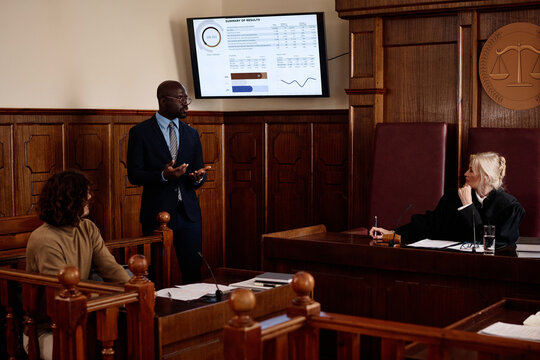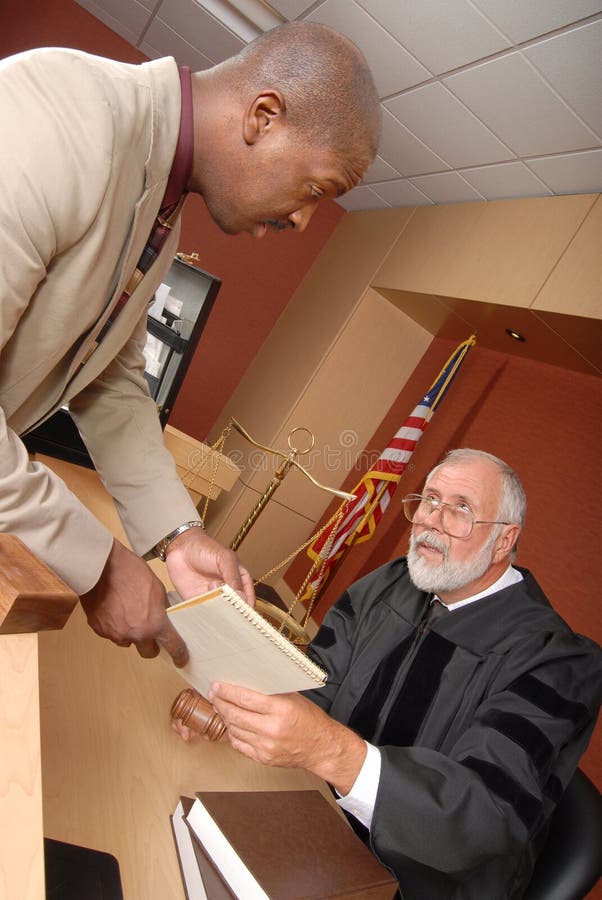The Duty of Aesthetic Help in Effective Trial Presentations: An Overview for Attorneys
The Duty of Aesthetic Help in Effective Trial Presentations: An Overview for Attorneys
Blog Article
Navigating the Intricacies of Trial Presentations: Tips for Seamless Distribution and Engaging Arguments
In the world of legal process, the art of trial discussion stands as an important determinant of success. As lawyers navigate the detailed web of court room dynamics, the ability to effortlessly deliver debates and evidence while mesmerizing the jury's interest becomes vital. The complexities integral in trial discussions require a fragile equilibrium of approach, skill, and skill. By developing methods that make certain a refined distribution and crafting engaging arguments that resonate with the target market, attorneys can substantially enhance their advocacy. In a globe where persuasion rules supreme, understanding the complexities of trial discussions is not just an option but a requirement for those looking for to dominate in the court room.

Understanding Trial Purposes
To effectively navigate a trial, it is vital to have a clear understanding of the purposes that need to be achieved. Before entering the court room, lawful teams should define their goals and preferred end results. These purposes offer as guiding principles throughout the trial, shaping techniques and influencing decision-making processes.
Comprehending test goals entails a thorough evaluation of the instance, lawful criteria, and the customer's benefits. Trial Presentations. It calls for a thorough examination of the facts, identifying key issues, and preparing for possible obstacles. By establishing quantifiable and certain goals, attorneys can tailor their arguments and discussions to line up with the preferred results
Moreover, a clear grasp of trial goals allows legal teams to focus on proof, witnesses, and legal arguments effectively. It permits for the growth of a meaningful narrative that reverberates with the discretionary, strengthening the total situation presentation.

Organizing Proof Successfully
Having a clear understanding of trial objectives lays the foundation for arranging proof efficiently in legal process - Trial Presentations. By straightening the presentation of evidence with the wanted results of the trial, legal groups can enhance their arguments and enhance their persuasiveness. One critical element of organizing proof is classification. Grouping proof based on themes or importance to certain legal components can assist improve the discussion and make complicated information extra digestible for the court or court.
One more key aspect in organizing evidence effectively is establishing a sensible flow. Offering evidence in a meaningful and sequential manner can aid develop a compelling narrative that supports the lawful disagreements being made. Additionally, using aesthetic aids such as graphs, graphes, or timelines can even more boost the organization of evidence and help in making clear complex connections or series of events.
Moreover, making certain that all evidence provided is relevant and acceptable to the instance is essential. Inadmissible or unnecessary proof can diminish the strength of the disagreement and possibly damage the credibility of the here and now celebration. As a result, a thorough testimonial and selection process should be carried out to include only the most impactful and lawfully audio proof in the test discussion.
Crafting Persuasive Narratives
Crafting engaging stories plays a pivotal role in presenting convincing disagreements during lawful procedures. A well-crafted story has the power to mesmerize the target market, stimulate feelings, and inevitably guide the choice for the here and now event. When creating a story for a test discussion, it is vital to develop a clear story that highlights bottom lines and connects them in a coherent fashion. Begin by outlining the realities of the instance in an engaging way, making sure that the series of events is easy to follow. try this web-site Present personalities successfully, supplying background information that helps the target market recognize their actions and inspirations. Furthermore, integrating vibrant descriptions and interesting language can bring the story to life, making it much more memorable for the court and court. By weaving together proof, statement, and legal arguments right into a cohesive and persuasive narrative, lawful experts can effectively support for their customers and increase the chance of a positive outcome in the court room.
Mastering Aesthetic Help
Effective use aesthetic help is essential to improving the influence and clarity of trial discussions. Aesthetic aids, when used purposefully, have the power to streamline complex info, enhance key points, and leave an enduring impact on the court and jury. To grasp visual help in test discussions, it is crucial to guarantee that they are clear, succinct, and pertinent to the debates being made.
When incorporating visual aids, such as charts, graphs, photos, or timelines, into a trial presentation, it is necessary to maintain them aesthetically appealing yet specialist. The visuals should complement the verbal arguments, providing a graph of the information being discussed without overwhelming the audience with unneeded information.
In addition, experimenting click here for more the aesthetic help in advance is imperative to ensure a smooth distribution throughout the test. Familiarizing oneself with the content, transitions, and timings of navigate to this site each visual help can assist preserve the flow of the presentation and protect against technological problems that may arise.
Delivering Impactful Closing Debates
An engaging closing argument offers as the culmination of a test discussion, encapsulating the core story and persuading the court and jury towards a favorable decision. Begin by laying out the major disagreements that sustain your client's setting, emphasizing why the evidence offered throughout the trial supports your story.
Furthermore, including emotional charm can better strengthen your closing disagreement. By linking and humanizing the instance on a personal level with the decision-makers, you can stimulate compassion and understanding, influencing their understanding of the realities offered. Additionally, repeating the lawful standards that should be satisfied for a desirable judgment can reinforce the credibility of your setting. Inevitably, a well-crafted closing argument should leave an enduring impact, engaging the court and court to rule in your client's favor.
Final Thought
Finally, grasping test presentations includes comprehending goals, organizing evidence, crafting narratives, using visual aids, and delivering impactful closing arguments. By implementing these strategies effectively, legal representatives can offer their instance flawlessly and make engaging disagreements in the court. It is important to navigate the complexities of test discussions with precision and skill to achieve success in lawful procedures.
By lining up the presentation of proof with the wanted results of the trial, lawful groups can enhance their arguments and boost their persuasiveness (Trial Presentations). To understand visual aids in test presentations, it is essential to ensure that they are clear, succinct, and appropriate to the arguments being made
An engaging closing disagreement serves as the end result of a trial presentation, enveloping the core narrative and encouraging the court and jury in the direction of a positive decision. Begin by laying out the primary arguments that sustain your client's placement, emphasizing why the proof provided throughout the test supports your story.In final thought, mastering test presentations includes understanding goals, arranging evidence, crafting narratives, making use of visual help, and supplying impactful closing disagreements.
Report this page